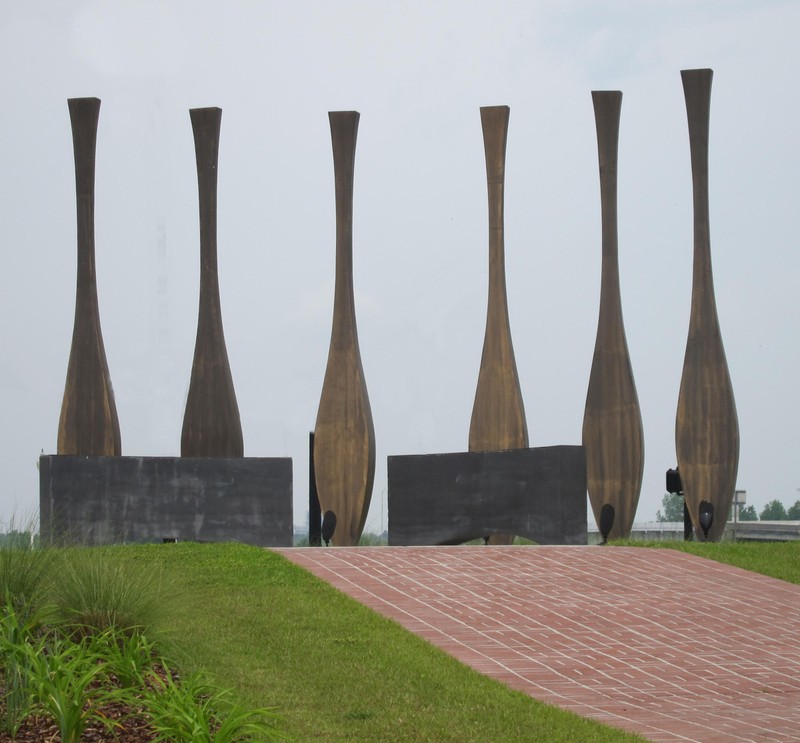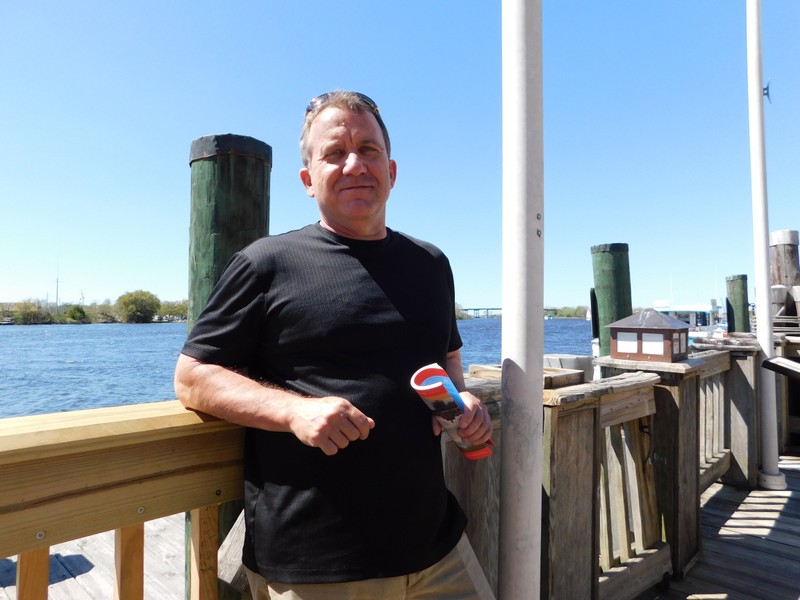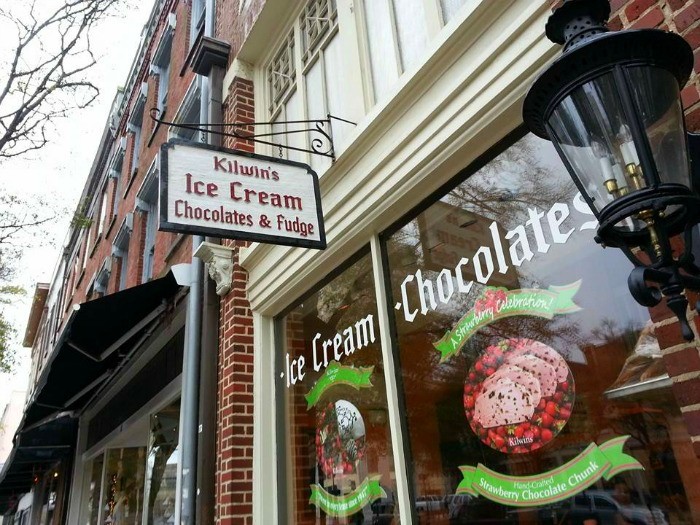Kilwins' Chocolates by the Waterfront
Introduction
Text-to-speech Audio
Images
Image of 1898 Wilmington Coup Monument between N. 3rd St. and N. Front St. Image from http://whqr.org

A picture of poet Michael White on the waterfront where his poem was inspired from taken on April 1, 2017.

Storefront of Kilwins where Michael White and his daughter purchased their ice cream as written in the poem. Image from bigbearswife.com

Backstory and Context
Text-to-speech Audio
During the year of 1898 in Wilmington, massive unrest facing the upcoming elections caused turmoil amongst the two parties of Democrats and Republican-Fusionists. In an effort to take control of the political leanings in Wilmington, the Democrats spearheaded a White-supremacist movement that intended to pit the White population against the African-American population. This decision led to the eventual climax of the election, seeing the Democratic sweep alongside a coup that overthrew the Republicans that were in power at the time. This coup involved a riot throughout the town that saw to the end of several African-American businesses and lives, demanding a change in racial tolerance. This is referenced within Michael White's poem when he says "No one came back," a statement that spoke to the near two thousand African-Americans who never returned to Wilmington.1
"Coup", White's poem, highlights a specific area along the docks where a rumor suggested that dead, African-American men were thrown into the river and left to sink down. One of White's prime tools in his poem is the use of quotations dotting the stanzas. Each quotation that White implements is cited from a variety of sources be it either oral recitation or historical literature. Not only do these quotes ground the poem in the true events of the coup in Wilmington, but they also force the reader to accept the literature as more than just a work of fiction or an embellishment of what happened during the coup.
The strength of White's poem is coupled by the effective flow of the mood from sentimental to reminiscent of a dark past and a wide use of quotations. Many of these quotes are expertly integrated with information of its origin, whereas others are left for the mind to imagine. Those lacking context spur the reader on to understand them further; quotes like "When we turned him over, Misto Niggah had a look o' 'sprise on his face,"2 which White implements to regard the end of a life and the end of the African American integration in Wilmington. However, if one reaches into the context of this line, it comes from what was claimed to be the only victim of the army in Wilmington.3
White's ability to transform the mood from a scene of innocence to darkness with his imagery is established in his walk along the docks with his daughter, enjoying an ice cream as they follow from the edge of the pier a long-nosed gar who is swimming below. His imagery then develops slowly into a realization of the dark history behind this beautiful scene as seen in White's words, "And yet it is so beautiful here." As he completes his trip to the past in the poem, he concludes by bringing reader back to the docks, now seemingly different with the understanding of what took place there. The thought of a body existing somewhere beneath the docks, buried beneath the riverbed "where fathers and daughters ramble, and lovers talk/and everyone goes for their evening walk" is a powerful image. This image creates a realization that the impacts of the past, particularly a past of hatred and blatant racism, are still amongst us today, even on our evening walks.
White's imagery throughout this poem develops as the subject matter of innocent walks evolves into scenery of murder and reckless destruction of a people. Where White originally implements light and uplifting adjectives and descriptors, it becomes eclipsed by dark reflections of the past and the ugliness hiding in the beauty of Wilmington. It starts with "melting praline ice cream" and "delicate, attenuated bowsprit," but quite suddenly it transforms into "gutted ribs" and "sunk bones of piers" which likely foreshadows his mentioning later in the poem of the bodies that were "tossed...off the dock." The importance of his wording here demonstrates his thought process as the memories of 1898 Wilmington flood into his mind until he addresses it directly and he's forced to face the dark history in front of him. This dichotomy of innocence and bloodshed remains with him for the remainder of the poem up to the last two lines where he relates all of the death and racism happening in the very location that he spends his afternoons with his daughter.
White's inspiration for "Coup" stems from the combination of his experience with his daughter, as well as the election of President Obama. It was the progress of race coupled with the protests that occurred during the 2008 election that spurred on an urge to write about the feelings that surrounded Obama's impending presidency. Although at first White was uncertain as to how he could scribe his feelings, it quickly came upon him to write about the coup of 1898, resurfacing the harsh, racial histories of Wilmington.4 This was actualized by creating a contemporary piece that touched on both the present and the past, tying them together in demonstrating that "the scene of beauty is also the scene of carnage."
Sources
2. White, Michael. "Coup." North Carolina Literary Review, vol. 1, no. 18, 146-147. Published 2008.
3. Umfleet, LeRae. A Day of Blood; The 1898 Wilmington Race Riot. Raeigh, N.C.: North Carolina Office of Archives and History: 2009. Print.
4. White, Michael. “Coup Reading with Michael White.” Historical Fact and Fiction: Wilmington Race Riot of 1898, East Carolina University, Greenville, NC, 1 Apr. 2017.
